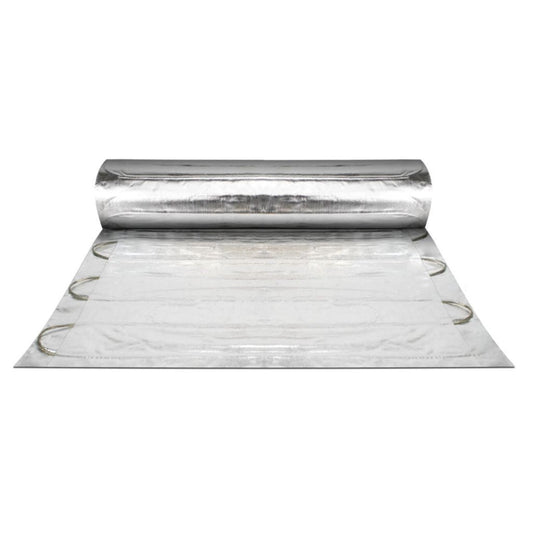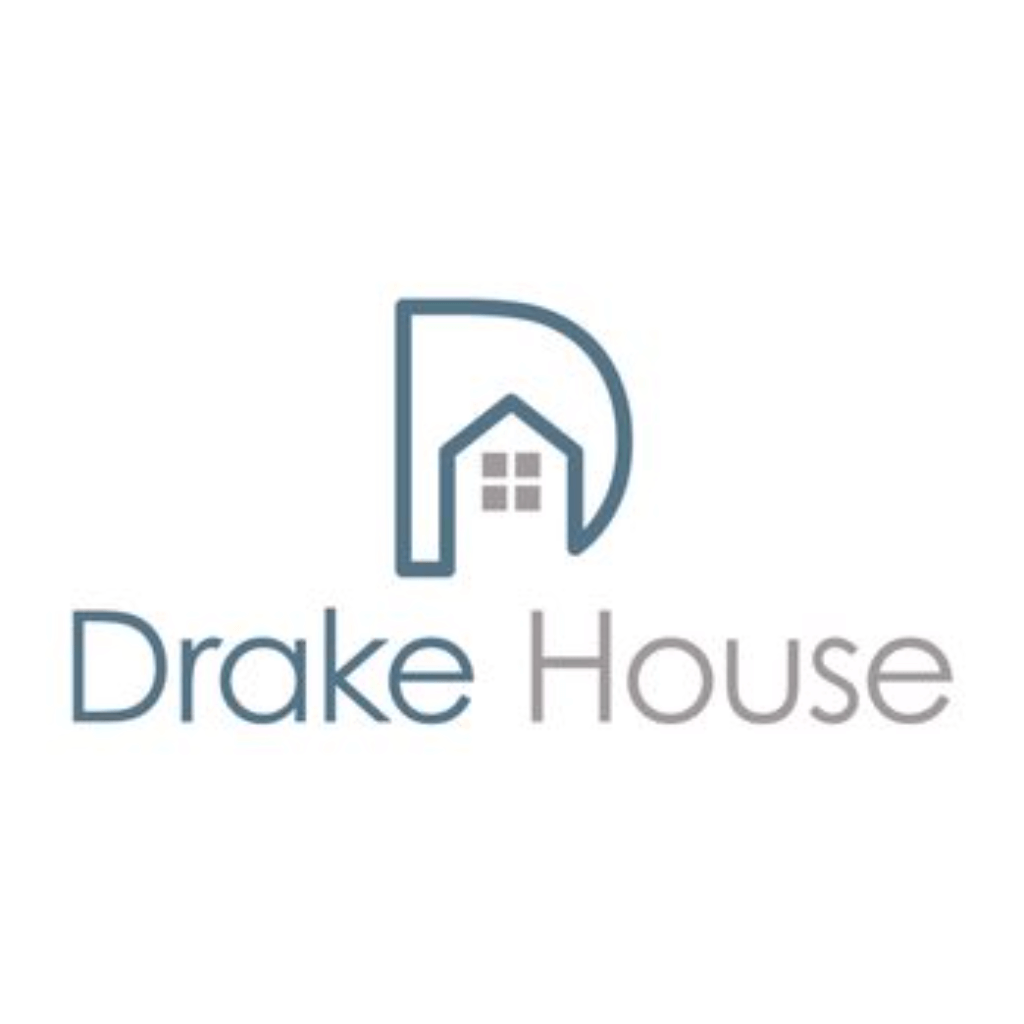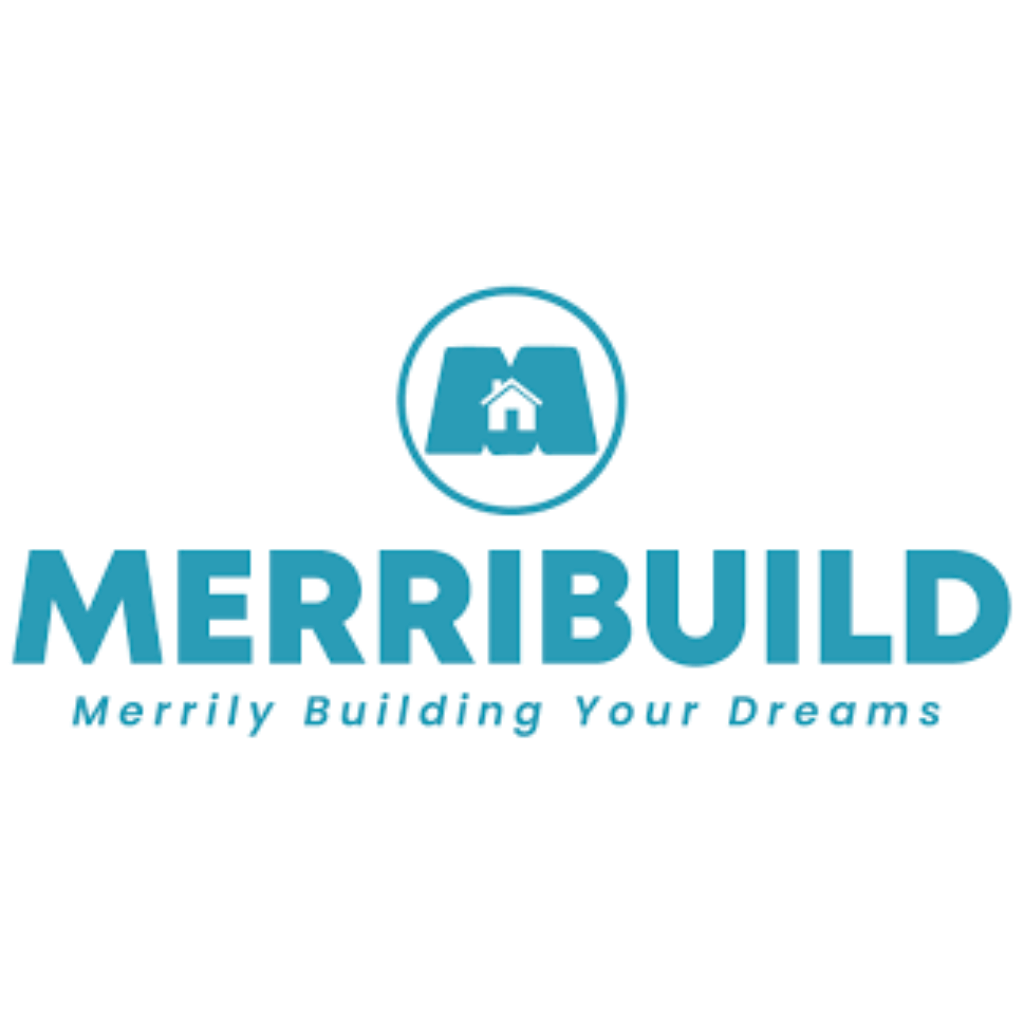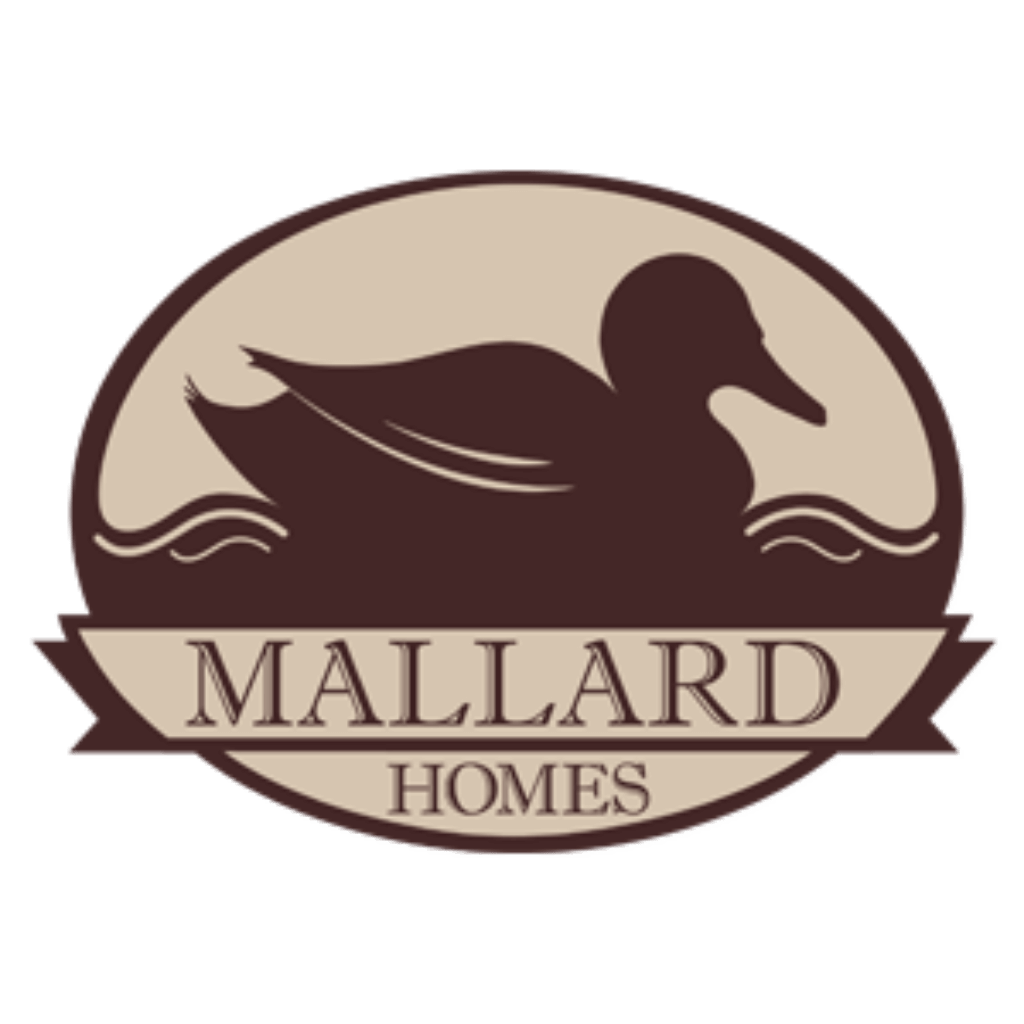SKU:ERT240-KIT-OT-1.5x70
WarmlyYours Environ Flex Roll 1.5′ x 70′ 240V Electric Radiant Floor Heating Kit With nSpire Touch Programmable Touchscreen Thermostat
WarmlyYours Environ Flex Roll 1.5′ x 70′ 240V Electric Radiant Floor Heating Kit With nSpire Touch Programmable Touchscreen Thermostat
Couldn't load pickup availability
- Free Shipping on Orders Over $400
- Same-Day Order Processing
- Easy Monthly Installments Starting at 0% APR*
• Text or call 800-614-7411
• Email support@usbathstore.com
• Start a live chat
Our team is available to serve you 8:00 AM - 11:59 PM ET, 7 days a week.
WarmlyYours was the first to introduce nonadhesive, foil, electric floor heating to the North American market, and we have over a decade of experience with this advanced design heating technology. At 12 watts per square foot, the energy-efficient Environ™ systems allow for the gradual warming of delicate carpet and floating wood floor coverings.
The Environ™ Flex Rolls are flexible and specifically designed for easy installation under the carpet, laminate, or floating wood flooring. They can be cut and turned at 90° or 180° to provide thorough wall-to-wall coverage of larger spaces.
Environ™ Flex Rolls have no polarity. WarmlyYours controls are equipped with ground fault circuit interrupter (G.F.C.I.) protection.
Ideal for installation under laminate, engineered wood, and floating wood flooring, WarmlyYours Environ™ Flex Rolls add radiant warmth and comfort to any room. These easy-to-install rolls are C-UL-US Listed and produce 12 watts per square foot. The uniform spacing of the heating elements throughout the non-adhesive foil casing ensures even heat distribution across the entire floor. Along with comes the programmable nSpire Touch which features a 3.5” full-color touchscreen and a modern design that instantly augments any room’s style. With an integrated Install Wizard, it’s never been easier to set up a radiant heating system according to your preferences and schedule. The nSpire Touch allows you maximum control over the floor temperature with 4 programmable events for each day of the week, which is great for “Goldilocks households” where there will be frequent adjustments to the temperature or thermostat’s schedule until it’s “just right.” This dual voltage (120V/240V) thermostat puts the control where it belongs, at your fingertips. Includes floor sensor.
Is Electric Floor Heating Energy Efficient?
The answer is yes, electric radiant floor heating is a very efficient way to provide heat. Electric floor heating systems use electrical resistance to generate heat that is then radiated to the solid objects in a room. This means much less wasted energy than in other forms of heating like forced air, because the solid objects heated by floor heating systems will retain their energy longer than hot air will. Also, due to the nature of electric floor heating, most users report being comfortable at a lower air temperature setting than if they used a forced air system exclusively, which can translate into significant energy savings.
However, while electric radiant floor heating is very cost effective, it still uses electricity. The operating cost for your floor heating system will depend on a few things like the size of your system, the temperature you're trying to achieve, and the cost of electricity in your area.
We’ve Talked About Energy Efficiency, Cost Efficiency, and Application, but What About the Most Important Part: Luxury
Electric radiant floor heating is a luxurious experience that has to be felt to be understood. In a regular bathroom, you know that the moment you touch your toes on the tile a shiver will go up your spine. Turning up the furnace or laying down bath mats (so you don’t have to touch the floor) are only partially effective solutions to this problem.
Electric radiant floor heating makes it so that the instant your feet meet the tile, stone, or laminate in your bathroom, they will feel a sensation of warmth.And, because the radiant heat rises from the electric floor heating to warm the objects in the room, you won't have to make a mad dash for the towel to warm your body. You can enjoy your bathroom because electric radiant floor heating has turned a frigid space into a toasty and enjoyable room of relaxation. And if electric radiant floor heating can give you the comfort and luxury that you’re looking for—and do it at such an unbelievable cost and with such easy installation—then why would you ever pick anything other than electric floor heating?
Flooring Types and Electric Floor Heating
The type of floor you want to use with your electric radiant floor heating system will have a huge impact on the floor heating system. This is because every floor is made of different materials and has unique construction methods. For example, tile floors need to be paired with electric floor heating that is embedded in the same thinset or self-leveling cement that adheres the tile to the subfloor. On the other hand, floating wood floors require adhesive-free electric floor heating systems that are designed for that application. With our expansive product portfolio and our decades of experience in the industry, we’ll be able to identify the right electric floor heating systems for your project.
☑ Did you know that in an average year, about 88% of all electric floor heating projects for WarmlyYours involve tile floors?
☑ In recent years, two of the fastest growing flooring types for pairing with electric radiant floor heating have been vinyl (specifically Luxury Vinyl Tile) and wood (largely nailed hardwood).
☑ Bathrooms and kitchens are the two most popular rooms for electric radiant floor heating. In a typical year, bathrooms will make up over half of all the projects that use floor heating systems.
What's Included
- 1.5’ x 70’ 240V Environ Flex Roll
- Circuit Check
- nSpire Touch Programmable Touchscreen Thermostat
- Floor Sensor
Not Included
- Furniture
- Underlayment Underneath the Flex Roll
Features
- Fast and easy installation with the cut-and-turn method
- Ultra-thin construction (1/16”) won’t impact floor height
- Installs without adhesives which means big cost savings
- Provides a heat output of 12-watts per sq. ft.
- 10-year warranty under laminate or floating hardwood, 5-year under carpet (US Only)
- UL Listed in both the US and Canada
- Circuit Check available to ensure fault-free installation
- No glue, cement, or thin-set required (floating application)
- Can be cut to fit into any shape (do not cut the heating wire)
Why Install Electric Floor Heating?
☑ ComfortThe number one reason to install electric floor heating under a new floor is absolutely the comfort, a heated floor is literally a luxury you can feel but you probably already knew that. |
☑ SafeThe number one reason to install electric floor heating under a new floor is absolutely the comfort, a heated floor is literally a luxury you can feel but you probably already knew that. |
☑ AffordableElectric floor heating is inexpensive if you put it in while you’re already replacing or installing a floor. In fact, the cost of electric floor heating systems is as low as $5 per square foot. Unlike hydronic systems, electric floor heating systems don't require expensive pumps or water heaters. Additionally, According to Zillow, homes with heated floors typically sell for 3.2% more. |
☑ FlexibleElectric radiant floor heating can be used as your primary heat source or as a way to add supplemental heat to rooms that are tricky to heat like the basement or a room above a garage. |
☑ CleanElectric radiant floor heating is a very clean heat since it doesn’t rely on forced air, which can circulate dust and other allergens. |
☑ Forced Air AlternativeFloor heating systems aren't loud like a central furnace, don't dry out the air, and require no regular maintenance. |
☑ Saves EnergyElectric radiant floor heating has higher levels of energy efficiency than central air systems because it heats the people and objects in the room directly via infrared heat. Floor heating systems are also inexpensive to operate, you can heat a typical bathroom for pennies a day. |
☑ Easy-to-Use ThermostatsThe secret to any great heating system is a great control and we've got an entire line of them for our electric floor heating systems. |
Specifications
Electrical
| Amps | 5.3 A |
| Battery | 5-year battery backup of clock and calendar |
| Circuits Required | 1 |
| Connection | 4 wires, double pole |
| Connection Method | Hardwired |
| Dual Voltage | + |
| Floor Load | 1.3 kW |
| Ground Fault Protection | GFCI, Class A, 5 mA |
| Maximum Current | 15 A |
| Maximum Power | 1800 W @ 120 V, 3120 W @ 208 V, 3600 W @ 240 V |
| Ohms | 44.86 Ohm |
| Supply | 120 VAC - 50/60Hz, 240 VAC - 50/60Hz |
| Voltage | 240 VAC |
| Watts | 1260 W |
| Watts Per Sq. Ft. | 12 Watts Per Sq. Ft. |
| Heating Element Thickness | 0.063″ |
| Flex Roll | Heating wire between two layers of fiber reinforced foil |
| Heating Element Insulation | Fluoropolymer |
| Heating Cable Outer Insulation | Metallic braid |
| Heating Output | 12 watts per sq. ft. |
| Heating Element Thickness | 3/64” (1.19mm) in diameter |
| Flat Cold Lead |
• Length: 15’ • Thickness: 3/16” x 9/32” • 17 AWG for rolls of 9 amps or less • 14 AWG for rolls over 9 amps • 1/2” conduit 2 cold leads max • 3/4” conduit - 3 cold leads Install per local code requirements |
| Factory Splice Max Size |
• 1/4” (6.35mm) thick • 4.5” (11.4 cm) long splice |
Product Dimensions
| Cold Lead Length | 15' |
| Coverage | 105 sqft |
| Depth | 0.1″ |
| Installed Depth | 0.75" |
| Length | 70' |
| Width | 1′5″ |
| Weight | 14.95 lbs |
Thermostat
| Floor Sensor Compatibility | 10k ohms, 12k ohms and custom |
| Included Floor Sensor | 10k ohms, 15' lead |
Appearance
| Color | White |
Installation
| Floor Types | Commonly installed beneath carpet (excluding Canada), floating wood, and laminate |
Performance
| BTU Per Hour | 4299 |
Controls
| Display | Backlit Display |
| Display Size | 2″ W x 3″ H (3.5″ Diagonal) |
| Languages | English, French, Spanish |
Identifiers
| SKU | ERT240-KIT-OT-1.5x70 |
| UPC (GTIN-12) | 881308052898 |
Packaging Dimensions
| Shipping Width | 9" |
| Shipping Height | 9" |
| Shipping Length | 18" |
| Shipping Weight | 15.2 lbs |
Warranty / Certifications

| Approvals | cULus listed |
| Ingress Protection Ipxx Rating | IP20 |
| Warranty | 10 years under Laminate & Floating Hardwood, 5 Years under Carpet (US Only) |
Environ™ Floor Heating Systems are backed by WarmlyYours 5 and 10-year “No Nonsense™ Warranty* and WarmlyYours highly recognized lifetime 24/7 technical support. Due to the fact that we will also cover not only the cost of labor but also the cost of the floor itself, our warranty is renowned for being the industry's best. Our “No Nonsense™ Warranty” for Environ covers 5 years for under carpet applications and 10 years for under laminate or floating wood floors.
Documents & Files
General Publications
Installation
- Environ Flex Roll System Installation Manual
- nSpiration Electrical Rough-in Kit Installation (Single Gang Box with 2 Conduits)
- nSpiration Electrical Rough-in Kit Installation (Single Gang Box with Single Conduit
- nSpiration Electrical Rough-in Kit Installation (Single Gang Box without Conduit)
- TempZone™ Twin Circuit Check Instructions
Technical Information
Operation Manuals
- Environ Flex Manual (English, French)
- nSpire Touch (UDG4-4999) Interactive User Manual
- nSpire Touch (UDG4-4999) User Guide
- nSpire Touch UDG4-4999 Interactive User Manual Spanish
Project Planners
- Floor Heating Request for Quotation Form
- Permanent Fixture Sample Draw
- Prodeso And TempZone Cable Quote Calculation Sheet
- Calculating Project Dimensions
- TempZone Rolls Materials And Tools Checklist
- Permanent Fixture Sample Draw
- Heat Loss Calculation Request Form
- Environ Checklist Materials And Tools Checklist
Wiring Diagrams
- nSpiration Series Thermostat Environ Wiring Diagram
- nSpiration Series Thermostat Multiple TempZone Twin Wiring Diagram
- nSpiration Series Thermostat Slab Heating Wiring Diagram
- nSpiration Series Thermostat TempZone Single Custom Wiring Diagram
- nSpiration Series Thermostat TempZone Twin Wiring Diagram
- nSpiration Series Thermostat Wiring Diagram
- nSpiration Series Thermostat Wiring Diagram with Multiple Environ™ using a Junction Box
- nSpiration Series Thermostat Wiring Diagram (120V & 240V)
- Slab Heat Wiring Diagram for TH115, TH114, Power Module
- nSpiration Series Thermostat Environ Wiring Diagrams
- nSpiration Series Thermostat Slab Heating Wiring Diagram
- nSpiration Series Thermostat TempZone Single Custom Wiring Diagram
Technical Support
- Environ Flex Roll Wire Repair Instructions (English)
- Environ™ Ohm Reading Guide (English)
- Cross Section Environ™ Mat under Carpet over Concrete (English)
- Cross Section Environ™ Mat under Carpet over Plywood Subfloor (English)
- Cross Section Environ™ Mat under Floating Laminate or Engineered Wood over Concrete (English)
- Cross Section Environ™ Mat under Floating Laminate or Engineered Wood over Insulated Concrete (English)
- Cross Section Environ™ Mat under Floating Laminate or Engineered Wood over Plywood Subfloor (English)
- Instrucciones de reparación de la tapa de la nieve y del calor de la losa (Spanish)
- Instrucciones para el kit de reparación de la fusión de la nieve y el calor de la losa (Spanish)
Warranties
Sell Sheets
- Environ Flex Roll Sell Sheet
- Indoor Controls Sell Sheet
- Radiant Heating Controls Comparison Chart USA
- Prodeso Membrane vs. Cable Strips Comparison Chart
Catalogs
Videos
WarmlyYours Introduction to Environ Easy Mats
WarmlyYours Environ Floor Heating Kit Installation
WamlyYours Environ Floor Heating Installation Under Floating Wood Laminate Condensed
WamlyYours Environ Installation
Frequently Asked Questions
How do I work with my electrician to install WarmlyYours electric floor heating?While WarmlyYours electric radiant floor heating systems are typically installed by your floor covering contractor, a licensed electrician is recommended for the final thermostat hook-up. With every quote, we provide an Installation Plan layout, together with an electrical plan that has all the info required for the electrician. |
Is electric floor heating safe and what about EMF?
Our electric radiant floor heating systems have withstood rigorous safety testing and earned the UL listing. They produce much less EMF than common household appliances like your TV or vacuum cleaner. The EPRI (Electric Power Research Institute) tests all electrical devices and publishes the data. Many common household appliances are tested at a distance of 6 inches. The test results indicate that on average, the EMF emitted for the following appliances, measured in Milligauss (mG) units, is: Vacuum Cleaner: 300 mG Microwave: 200 mG Portable Heater: 100 mG Dishwasher: 20 mG Washing Machine: 20 mG WarmlyYours TempZone™ (Twin): 1.8 mG |
How do you keep a sunroom warm in the winter?
Sunrooms can be very cold during the winter months. While a furnace may push some warm air into the room, the large number of windows, exterior walls, and other causes of heat loss in a sunroom will typically keep it from having a comfortable temperature level. Floor heating and radiant panels will add radiant heat, which the human body absorbs faster than other forms of heat, to the room so that it feels warm even at lower temperatures. |
What type of flooring can I install along with an electric floor heating system?WarmlyYours’ TempZone™ product is most commonly installed under tile, stone, and marble flooring, but can also be installed under many other popular floor covering options such as hardwood, vinyl and linoleum. We also have our Environ system, which is an electric floor heating product as well and is specially designed for installation under carpet (in the U.S. only), laminate and floating wood. WarmlyYours can accommodate any flooring type with either of the electric radiant floor heating products that we offer.
|
How do I know if I am installing my electric floor heating system properly?Please keep in mind that you must check your electric floor heating system with a digital ohmmeter in conjunction with a Circuit Check™. Take an initial reading as soon as you take the product out of the box to verify that it is within -5% / +10% of the values stated on the product’s label. This will give you a basis of comparison for future readings. Take a second reading once you have positioned the system to match your custom installation plan. It is also advisable to take an additional reading in the middle of the tile installation, just to make sure that the Circuit Check™ is doing its job. Then, take a final reading when you are finished with the floor installation and are ready to hook up the thermostat.The Circuit Check™ is a tool developed by WarmlyYours to give you peace of mind and ensure trouble-free installations. Simply hook up the cold leads to the tool while you position the system to match your custom installation plan. The Circuit Check™ will continuously monitor the continuity of the circuit during the installation of your system and during the installation of your flooring. The Circuit Check™ beeps immediately when a short in the system is detected, alerting you to a potentially damaged cable in the area you are working, before you lay the tile over the electric floor heating system. The WarmlyYours technical support team is available 24/7 to provide assistance if the alarm sounds, or if you would have any questions during your installation. |
Should I be concerned about electric floor heating melting the toilet connection's wax ring?To prevent any overheating, we recommend that you do not install any electric radiant floor heating elements closer than 4" from the wax ring. |
Will the flooring manufacturer still warrant with electric floor heating underneath?Always check with the flooring manufacturer to see what they will cover when it comes to floor heating. In most cases there will be a floor temperature limit - this can be programmed into a programmable or smart thermostat. Check for installation instructions and requirements before adding floor heating. |
Can I have one thermostat for my open floor kitchen, dining room and living room?We usually recommend that you have an individual thermostat for each room. However, if it's an open floor plan and your local electrical code allows you to have one controller for the whole area, then it's definitely possible to have it all controlled from one thermostat. |
If I have extra cold lead wire, can I trim off what I don't need for my installation?Yes. Unlike the heating cable for electric floor heating, the cold lead wires can be trimmed or lengthened with additional lead wire which can be purchased from WarmlyYours. |
Should I add insulation before installing electric floor heating and how will that affect the system's performance?When installing electric floor heating over a concrete slab, insulating underlayments like CeraZorb and Cork are highly recommended to ensure efficient operation, faster heating times and warmer floor temperatures. |
What temperature should I set my heated floor to?The perfect room or floor temperature is always going to be a personal preference. However, we do see that our customers will usually set their floor temperature to somewhere in the 80°F to 84°F range. |
How much does it cost to run an electric floor heating system?The answer to this question will depend on a whole host of variables related to electric floor heating, including, but not limited to, the run time (for supplemental heating, we usually recommend between 4-8 hours per day), the electric radiant floor heating system you're using, the total square footage, and your local electrical cost. Typically, the cost is just a few cents a day. |
Can I put electric floor heating in the shower?Yes, we have TempZone Shower and Bench mats with sizes designed specifically for shower installation and they are wet location listed for for installing electric radiant floor heating to a shower. |
Do I have to replace my floor to install electric floor heating?Yes. While there are some floor heating systems that can be installed beneath floor joists, most electric radiant floor heating systems will need to be installed beneath the floor itself. This is why the best time to install electric floor heating is during a remodel or as a part of a new construction, when a floor is being installed anyways. If you're interested in alternative radiant heating methods, check out our Radiant Panels, which are wall-mounted and use infrared technology to provide supplemental heating. |
Do I need insulation when installing an electric floor heating system over a concrete slab?When WarmlyYours electric floor heating systems are being installed on a concrete slab, we strongly recommend adding a layer of insulation over the slab prior to installing the system. While our electric floor heating provides up to 25% more heating power per square foot than many of our competitors, the slab will always act as a "heat sink." Some of the heat that would otherwise be transferred to the flooring surface will remain in the slab, causing the floor’s surface temperature to be considerably lower. This is true with any electric radiant floor heating system. When installed on top of a concrete slab without insulation, it is generally accepted that electric floor heating will take the chill away from the floor and provide a small amount of warmth. Adding insulation on top of the slab and beneath any electric radiant floor heating system will allow a greater percentage of the heat generated to transfer to the flooring surface. This results in greater efficiency and therefore faster warm up times, higher expected surface temperatures and lower energy usage. The floor will have the capacity to warm to a comfortable temperature, and in some cases can be employed as the primary heat source for that room. The recommended types of insulation are natural cork, insulated tile backer boards and insulated underlayment, such as CeraZorb synthetic cork. |
What voltage does WarmlyYours floor heating systems utilize?The floor heating systems are offered in both 120 volt and 240 volt for the North American market. A 208 volt breaker panel can also accommodate our 240 volt floor heating system. It is important to note that the energy consumption will be the same: a 240 volt system will not cost more to operate than a 120 volt system. You are billed in kilowatts, and the 120 volt and 240 volt systems use the same amount of kilowatts. WarmlyYours often specifies a 120 volt system in smaller projects while a 240 volt system is typically recommended for larger projects (120 square feet of electric floor heating coverage or more). The benefit of switching to a 240 volt system is the reduction in amperage. Our programmable thermostat can control a radiant floor system up to 15 amps. The 120 volt system will reach 15 amps at 120 square feet of electric floor heating coverage. However, the 240 volt system will reach 15 amps at 240 square feet of electric floor heating coverage, allowing a much larger system to be connected to the thermostat. For installations over 240 square feet, a relay contactor or power modules are needed. |
Can the floor heating be set to turn on at certain times when we know we will use those areas and need heating?Yes, with our programmable thermostats, you can choose which days and times the floor heating turns on for your comfort. With a Smart thermostat, you can also control these options from your phone while away from home. |
How will electric floor heating affect my wood floor?WarmlyYours nSpiration controls are equipped with an in-floor sensor to precisely control the floor's temperature to comply with the wood manufacturer's temperature recommendation. |
Can you heat under the appliances, fixtures, or furniture in a laundry room, mudroom, or utility room?No, it is recommended that floor heating only be installed in the areas that you will walk on. Heat can become trapped if installed under objects that do not offer enough clearance for air to circulate (such as a washer or dryer). |
What is the total power/amperage that the electric floor heating system draws and does this system need a dedicated circuit?The amount of amperage draw depends upon how large the area is that you are heating. For coverage of areas less than 30 square feet, the system will draw less than 3 or 4 amps. If you have a larger area over 120 square feet of heated space, then you may need a larger breaker plus additional controls. No matter what the size of the area you choose to heat, we recommend a dedicated circuit for your electric radiant floor heating system. |
Can I use electric floor heating as a primary heat source?Yes, in most cases, an electric floor heating system can be effective as a primary heat source. However, our TempZone™ and Environ™ systems are most commonly used as a secondary heat source, providing floor-to-ceiling radiant heat to any room in your home where you desire more warmth and comfort. |
How many watts per square foot does Environ™ deliver?The Environ™ Flex Rolls and Easy Mats are designed to deliver 12 watts per square foot. |
I have multiple Environ™ flex rolls, how do I connect them to the thermostat?Multiple Environ™ products may be connected in parallel directly to a thermostat or through the junction box. Please ensure the total amperage of all connected mats doesn’t exceed the thermostat’s maximum load. |
I have a pre-attached underlayment on my laminate flooring, can I use Environ™?No. Laminates that have their pad already attached to the laminate are not compatible with the Environ™ Products. |
Can carpet be used over underfloor heating?Yes, carpet does not significantly impact the effectiveness of floor heating. In fact, we have Environ Flex Rolls made specifically for under carpet installation (U.S. only). |
Is there anything different I should do when installing bamboo flooring over a radiant heating system?It's important to take extra care when installing bamboo flooring over a radiant heating system. Make sure that you read both the bamboo flooring's and the radiant heating system's installation instructions carefully before beginning. |
Do I need to acclimate the bamboo flooring to my home's temperature and moisture levels before installation?Yes, acclimation is an important first step to extending the life of bamboo flooring. Typically you want to place it in the room where you’ll be installing it for at least 3 to 7 days, with the radiant heating system on. This allows the bamboo flooring to acclimate to the room’s standard temperature and balance with the environment. However, make sure to always defer to the bamboo flooring manufacturer's instructions. |
Do I need to leave the radiant floor heating system set to one temperature with bamboo flooring?When using bamboo flooring over radiant heat, it is best to set the temperature and leave it at that temperature. Bamboo flooring will naturally withstand temperature changes(it’s one of the many advantages of bamboo flooring), however, it performs best when radiant heat is set to a constant temperature without changing more than a few degrees per hour. Also, never let the "floor temperature" for the radiant heating system exceed the maximum temperature identified by the flooring manufacturer. |
With bamboo floors, can I add the radiant heat to just a specific section of the floor or does the whole floor need to be heated?It is recommended that bamboo flooring is heated evenly with a "full coverage" design for the heating system. |
Is bamboo flooring a good selection for radiant heated floor?The short answer is yes but there are some other factors to keep in mind. For example, Bamboo flooring typically has a higher thermal resistance than tile, so the heating performance may be slightly diminished. Wood, bamboo, linoleum, cork and carpet all have different R-values (from 1 to 3) and they typically use an underlayment or a pad with an R-value of 1 to 2. The question naturally arises whether the radiant heat can effectively heat through all of that. Radiant heat transfers energy depending upon the density, humidity, and thermal resistance of the object. Ideally, the lower the R-value in the floor and underlayment, the better. Some underlayments, made from synthetic rubber, have extremely low R-values and are ideal for radiant heated floors because they allow the heat to transfer through more quickly. |
Can I have one thermostat for my open floor kitchen, dining room and living room?We usually recommend that you have an individual thermostat for each room. However, if it's an open floor plan and your local electrical code allows you to have one controller for the whole area, then it's definitely possible to have it all controlled from one thermostat. |
Can I put furniture on top of underfloor heating?Yes, but any furniture that may trap heat, such as pieces with an enclosed bottom, should be avoided. Furniture on legs with a clearance of at least 3" is permissible. |
Does the bamboo flooring have to be a certain thickness to allow radiant heating to work properly? Can underlayment (moisture/sound barrier) still be used?Check the flooring r-value before installing. As long as the flooring product has an r-value of 1 or less, it should work well with electric floor heating. We suggest the underlayment be placed under the heating layer. The heating element should be placed between the underlayment (preferably at least 1/4") and the flooring. |
How can I make my living room feel warmer?Simply set your floor heating thermostat to a comfortable temperature to maintain a nice warm floor. Your room will feel warmer and, typically, your furnace will cycle less often. |
I have a pre-attached underlayment on my bamboo flooring, can I use Environ™?No. Laminates that have their pad already attached to the laminate are not compatible with the Environ™ Products. |
What if I have cracks in my concrete slab? Will that affect the floor heating installation?Make sure any cracks or raised edges are sanded down before installation. Seal and patch cracks where possible. If needed, pour a layer of self-leveling cement to make sure surface is level and flat. Then proceed with instructions to install desired floor heating system and flooring. It is strongly recommended that an insulating underlayment be installed between the slab and heating element to prevent heat loss. |
What is the typical operating cost of the Environ™ floor heating system?The actual cost of operating your floor heating system will vary depending upon a number of factors including the cost of electricity in your area and the length of time you run your system. |
What underlayments are compatible with Environ Heating System?Any type of underlayment/padding may be used as long as it has a density of 6-8 pounds per cubic foot. Certain underlayment, such as ¼” (6mm) thick cork, or 5mm CeraZorb are recommended for Environ™ Flex Rolls. It is also acceptable to place a vapor barrier, such as a plastic sheet, under the underlayment. Underlayment papers are not compatible with Environ™ Flex Rolls. Underlayment is necessary to prevent Environ™ Flex Rolls from damage from the weight of the floor, furniture, and people. Unavoidable wooden floor movements will not harm Environ™ Flex Rolls. Wooden floors expand and contract with temperature and moisture change. The wooden floor “moves” on top of Environ™ Flex Rolls. This movement will not damage Environ™ Flex Rolls when the installation is done correctly and the underside of the final floor covering is installed evenly. Some underlayment materials also have a noise reducing and insulating effect. When installing over concrete, a ¼” underlayment is mandatory. Any underlayment available in ¼” size is acceptable in most cases. CeraZorb, cork, or ¼” to 3/8” of expanded polystyrene (EPS) with a density of 2 pounds per cubic foot or more, are recommended for installation under Environ™ Flex Rolls. When installing over a concrete slab, choose the underlayment with the highest R-Value. |
Does the laminate flooring have to be a certain thickness to allow radiant heating to work properly? Can underlayment (moisture/sound barrier) still be used?Check the flooring r-value before installing. As long as the flooring product has an r-value of 1 or less, it should work well with electric floor heating. We suggest the underlayment be placed under the heating layer. The heating element should be placed between the underlayment (preferably at least 1/4") and the flooring. |
How do you avoid a "spongy" feel for wood floors when using a floor heating system while still providing optimal heat transfer?We recommend our floating floor heating system for floating wood floors, such as laminate or bamboo. With an insulating layer between the subfloor and heating system, the heating cables will settle into the underlayment making for a flat surface for the floor covering. |
Can I put furniture on top of underfloor heating?Yes, but any furniture that may trap heat, such as pieces with an enclosed bottom, should be avoided. Furniture on legs with a clearance of at least 3" is permissible. |
Is there a visual height difference between carpets with Environ™ underneath and without and will the heating system make a crunching sound under my feet?The height difference and sound is purely dependent on the choice of carpet and padding. Different carpets and carpet pads have different qualities and will be a determining part of height and sound. |
How thick are the roll/mat and electrical cord?The roll and mat is 1/16" thick, and the cord is 1/4" in diameter. |
Will this burn the laminate or carpet?No, as long as a licensed electrician properly installs it. We suggest setting your nSpiration Series thermostat control at a maximum of 85°F when the system is installed under laminate flooring. See your laminate manufacturer for their requirements regarding their product when used with electric radiant heat. |
Is the Environ™ floor heating system installed directly up to the wall end to end and can I have it installed under my couch too?For carpet applications, we require 12" around the perimeter of the room so that a carpet stretcher can be used without damaging the Environ roll or mat. With laminate floors, you can install it wall to wall. We do not recommend heating under heavy pieces (100lb/ft2). And, never heat under permanent fixtures. |
Should you leave underfloor heating on all the time?An electric underfloor heating system doesn't need to be left on all the time. The system can be completely turned off or set back to a lower temperature when not in use. If you have a programmable floor heating thermostat, then the system can also be set to operate only during specific times. |
How do I prepare my living room for extreme cold?Having floor heating installed and set to a higher temperature during particularly cold days will help to maintain a comfortable temperature level by providing supplemental heat |
What wood species are recommended or not for floor heating? Is Engineered or solid better? Nailed down or floating?The most important factor for the wood floor chosen is structural stability. According to the USDA Forest Service, this list shows most dimensionally stable to least: Mesquite Australian Cypress Teak Santos Mahogany American Cherry South Yellow Pine Douglas Fir American Walnut Brazilian Cherry Hard Maple Red Oak True Hickory American Beech Engineered is the most structurally stable compared to natural hardwood, so it will work the best with floor heating. If you do want to go with Hardwood, quartersawn or riftsawn narrow planks are the most structurally stable and would work best for this application. Overall the most important factor for the room is relative humidity. Keeping a consistent humidity and temperature in the home will help wood floors last for many years to come. |
What wood laminates are compatible with Environ™ Heating System?Verify that your laminate is warranted for use with radiant heat. Most modern wood laminate floors are compatible with Environ™ Flex Rolls, but the maximum thickness of the timber / laminate / wooden flooring should not exceed 5/8” (15mm). Flooring that has metallic strips as part of its locking system is NOT compatible, as these metallic strips may damage the Environ™ Flex Rolls. Also laminates that have their pad already attached to the laminate are not compatible with the Environ™ Flex Rolls. |
What if I have cracks in my concrete slab? Will that affect the floor heating installation?Make sure any cracks or raised edges are sanded down before installation. Seal and patch cracks where possible. If needed, pour a layer of self-leveling cement to make sure surface is level and flat. Then proceed with instructions to install desired floor heating system and flooring.It is strongly recommended that an insulating underlayment be installed between the slab and heating element to prevent heat loss. |
Can the floor be waterproofed and still have floor heating?Yes, we offer several options to help make your floor heating system water resistant or waterproof. Our TempZone product line is designed for wet areas - making it completely safe for rooms that will have water on the floor at times or may experience leaks or flooding. We also offer waterproofing bands for our TempZone Cable + Prodeso Uncoupling Membrane system. Allowing you to waterproof all seams and the perimeters of the wall - guaranteeing that your floor heating system stays safe and prevents water from leaking to areas below. |
How does electric floor heating work?Electric floor heating works by having an electric heating cable installed underneath the flooring (embedded or floating, depending on the system and floor type), which is then wired to a special thermostat (either one specifically designed for electric radiant floor heating, like a WarmlyYours’ nSpiration Series control, or a third-party thermostat). When turned on, the heating cable emits heat upward through the flooring which is then radiated throughout the room, heating all solid surfaces. |
What is the recommended temperature for a heated kitchen floor?Everyone has their own comfortable temperature setting, but we typically find that our customers use their thermostats to set the "floor temperature" of the system in the 78°F - 84°F range. |
Can you use a sunroom in the winter?Yes, sunrooms can be used in the winter, just activate your floor heating or radiant panel and turn your sunroom into a 4-season room. You will notice a tremendous difference in the room comfort, especially with the thermostat set to maintain a desired ambient temperature. WarmlyYours thermostats will do the work for you by energizing the floor for longer cycles. |
Will electric floor heating help with moisture issues like mold and mildew?Yes, the drying effects of electric radiant floor heating will reduce the humidity coming from the slab, which is the largest source of moisture. |
Can electric floor heating be installed under a vanity?Electric radiant floor heating should not be installed under permanent fixtures that may trap heat. However, if the vanity or cabinets are "floating" or are on legs, then a floor heating system may be installed under it |
How does electric floor heating compare to central or forced air heating?Typically, electric floor heating is used as a supplemental heat source but in some cases, it can be used as a primary heat source. Electric floor heating is more energy efficient, less prone to spreading dust and allergens, and easier to control from room to room. Air-based heating systems can be used for both heating and cooling and can be a good way to control air quality in the home with regular maintenance. |
How much does it cost to heat a bathroom floor with electric floor heating?A typical bathroom floor can be heated for about a quarter a day with electric radiant floor heating. |
Is the heating element waterproof?Our TempZone electric floor heating products are waterproof and wet location listed. |
How are hydronic and electric floor heating systems different?While both hydronic (heated water) and electric floor heating systems perform a similar function by providing radiant heat from beneath your floor, they do differ in some pretty crucial ways. Typically, using hot water instead of electricity will result in lower operational costs but significantly higher investment and maintenance costs. This usually means that hydronic heating systems are reserved for new construction projects (where it is easier to incorporate the boilers and pumps needed to operate the system) and electric floor heating is often used for remodeling projects in bathrooms, kitchens, etc. To learn more about the differences between these systems, check out this post. |
How can I make my basement warmer?A floor heating system can work as a supplemental heating source and make the basement warmer. If more heat needs to be added to the room, you can experiment with setting the floor heating thermostat to higher temperatures. |
What temperature will my heated floor reach?The temperature of your floor can range anywhere between 75°F to 95°F. The floor's actual temperature will depend on a number of factors including the amount of heat loss that the room experiences as well as the room’s configuration. For instance, the warmth contained in a two story entry way would likely be less than that of a smaller, more enclosed area such as a bathroom. In a bathroom that is located on the second floor of your home or over another floor in your home that is typically heated, the temperature of your heated floor should easily reach a comfortable temperature of 85 degrees Fahrenheit, if the electric floor heating system is installed correctly. For the heat loss calculation for your specific room, you can access the Heat Loss Calculator or you can call us at (800) 875-5285 and a Customer Service Representative will make the calculation for you. |
What Ohms meter should I buy?A digital meter with a 0-200 Ohms scale ( Ω ) to measure the heating wire's resistance, and a 20K scale to measure the sensor's resistance. |
What is the BTU output of these systems?For Tempzone it is 51 BTU’s per square foot per hour and for Environ, it is 41. Take the wattage of the product (shown on the product’s label) and multiply that by 3.41. That is the BTU value for that product |
What is the polarity of this radiant heating product?When installing electric floor heating over a concrete slab, an insulating underlayment like CeraZorb is highly recommended to ensure efficient operation, faster heating times and warmer floor temperatures. |
Can I install vinyl flooring, including luxury vinyl tile (LVT) or luxury vinyl planks (LVP), over the Environ product?No. Most vinyl flooring requires a solid flat surface to maintain its shape and many recommend that their flooring is kept at least ½“ away from the heating element. The best solution for vinyl floor covering is our TempZone product embedded in self leveling cement. Always check with the flooring product's manufacturer regarding limitations, warranties, and installation requirements. |
How many square feet of floor heating can be connected to one thermostat?One thermostat can control multiple heating mats/cables as long as all the elements are using less than 15 amps. For TempZone™ Flex Roll systems for example that would be maximum of 120 sq.ft. for 120V systems and 240 sq.ft. for 240V. |
Share












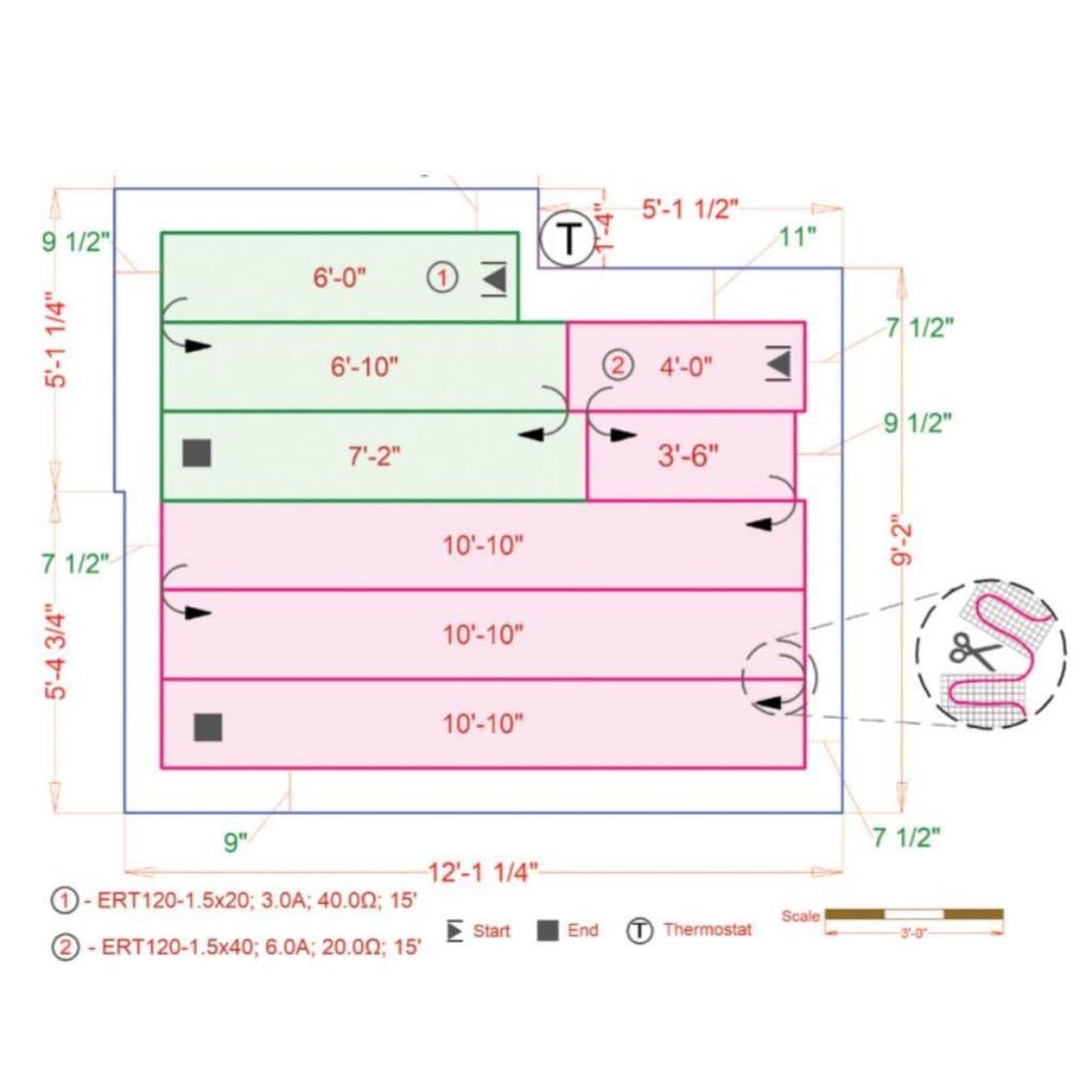
What our customers are saying...
-

What an excellent company and excellent products. Just like the old days when companies really cared about their customers, these guys are awesome!!!
Betty C.
Warminster, Pennsylvania
-

I was greeting in chat soon after logging into their web. She was genuine and very helpful in getting me the correct items I needed. The communication about shipping and tracking was great as well. My mind was at ease concerning my investment purchase! Thank you!
Jolene
San Jose, California
-

I've been extremely imporessed with the service--from the actual humans answeing phone calls to the accurate and prompt follow up, including and unrequested phone call to follow up on my order delivery requests.
Monica
Fairfax County, Virginia
















